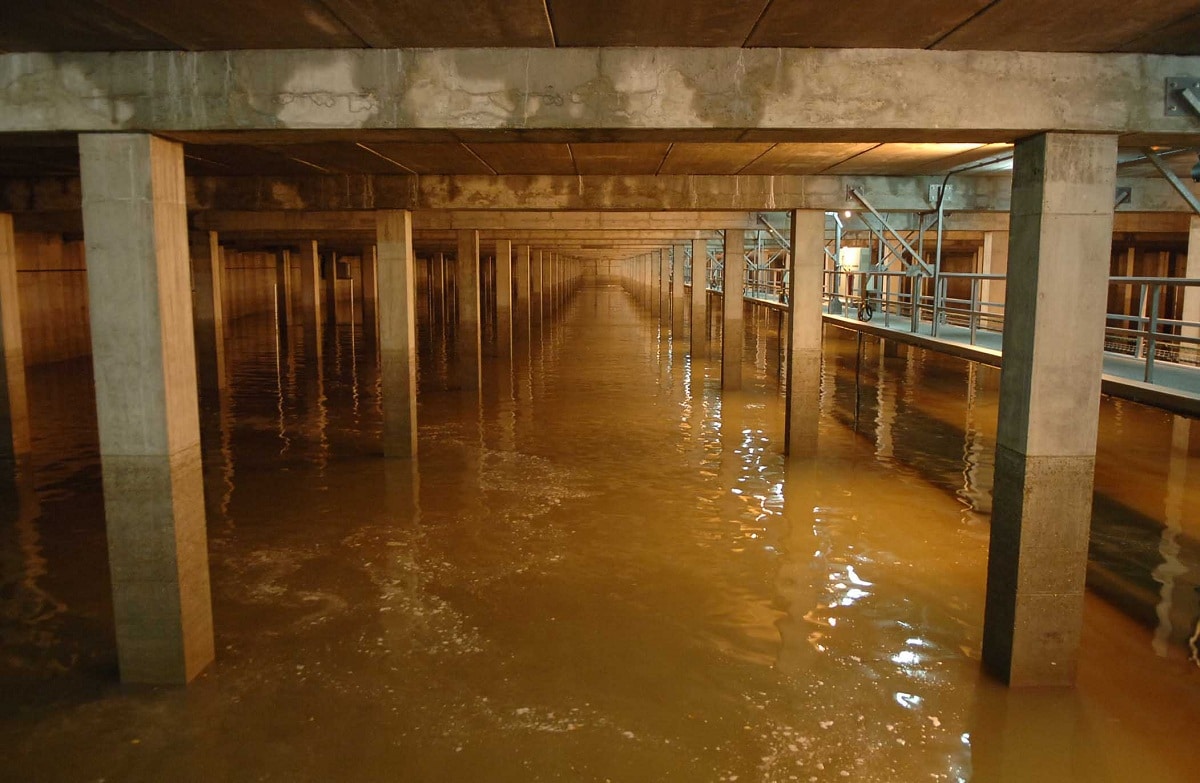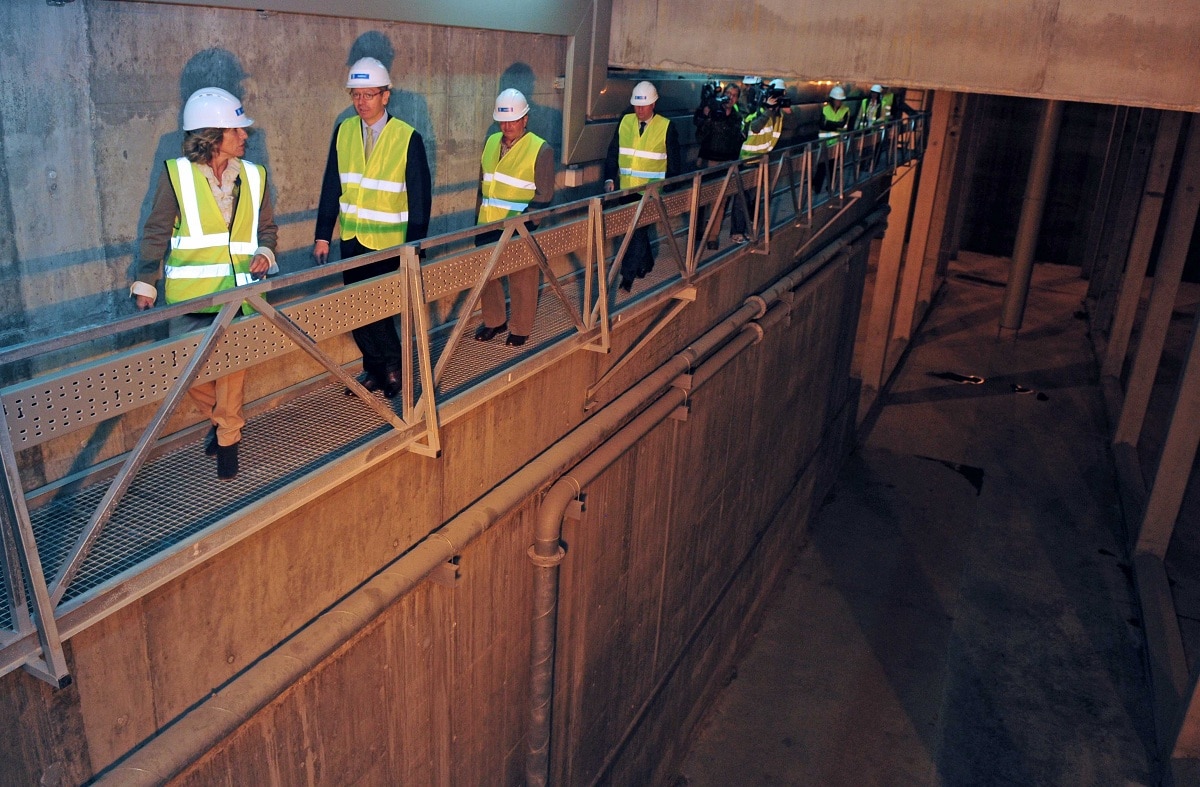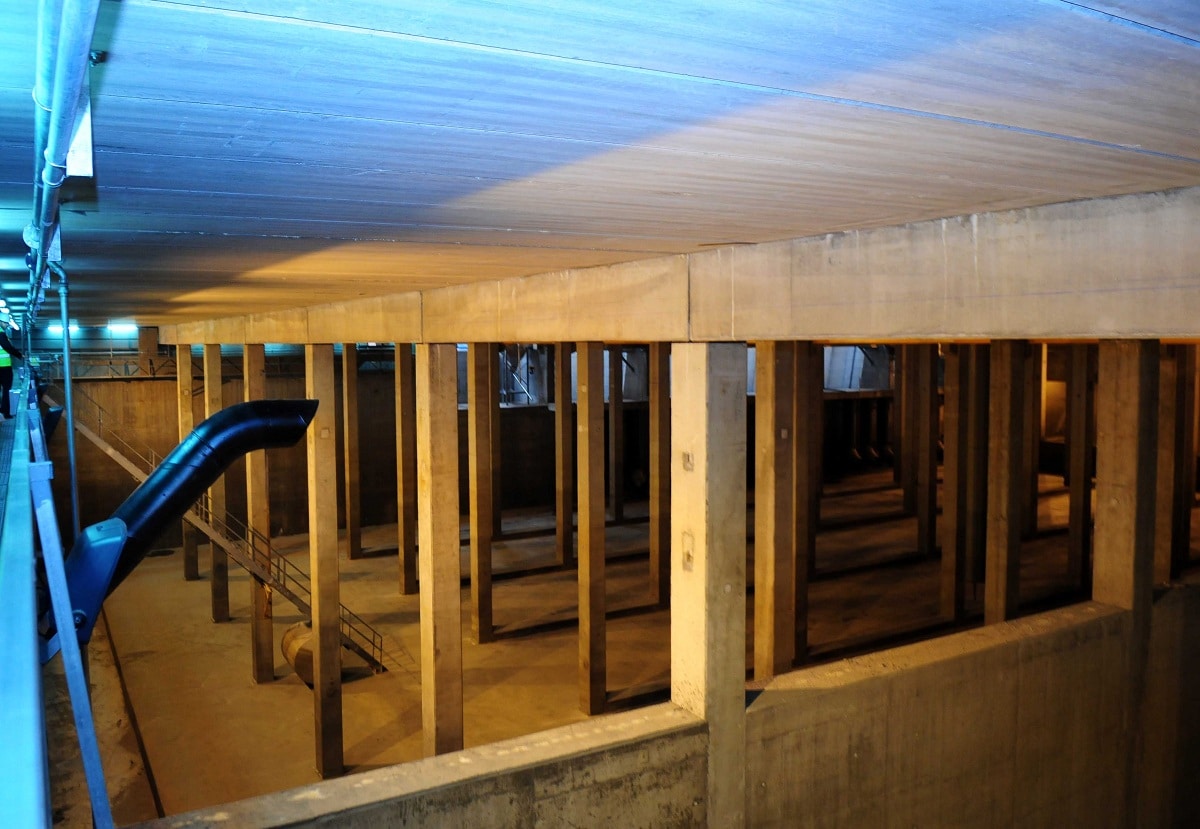
We are used to rain from the sky soaking the streets. But where does the torrent that sucks up the sewer go? As a general rule, sewage treatment plants. But in Madrid they have a system that allows rainwater to be stored in rainwater tanks before it reaches the treatment plant. The storm pond, the gigantic underground water tank used to store the first rainwater, is also the most polluted - even worse than sewage - because it carries away all the dirt that has accumulated on the streets and asphalt. In this way, the tank prevents the sewage treatment plant from exceeding its maximum flow rate and having to discharge the rest without treating it into the receiving channel.
In this article we are going to tell you everything you need to know about the storm pond and what its importance is.
What is the storm pool

On days of heavy rain, the water seeps into the sewers, but due to its volume, it cannot be treated immediately. Therefore, the water waits in the storm tank until the rain stops. They are then gradually guided to the purification stations. This not only prevents river pollution, but also possible flooding and environmental damage.
The water is directed to the rainwater tanks through huge collectors up to seven meters in diameter, like an underground tunnel. In addition, before reaching the tank, the water passes through a series of filters that trap solid contaminants such as plastic bottles or other types of objects. Many solid objects that arrive with rainwater accumulate at its bottom. They are subsequently eliminated by different cleaning systems.
At Canal de Isabel II we have 65 rainwater tanks that store rainwater before it is treated. Together they can store 1,53 cubic hectares. The two largest storm tanks in the world are also located in Madrid. These are the Arroyofresno and Butarque facilities. Each one can store up to 400.000 cubic meters of water, 8 times more than the Retiro Pool.
Thanks to this type of rainwater pools, the first rains are retained in the subsoil until the treatment plant has the capacity to manage them. Once purified, the water can be discharged back into the river in optimal conditions without ecologically threatening the flow.
Storm Pond Operation

During the dry season, the wastewater goes directly to the treatment station. However, during the rainy season, sites often exceed capacity, so runoff water from precipitation is directed to stormwater pools along with wastewater through what is known as "outfall." single system” (DSU).
The storm pond retains DSU until it can be managed at a wastewater treatment station. As a result, environmental problems caused by the first phase of rain events where most of the pollution is concentrated are minimized, since it is these waters that wash streets, cars or transport waste and even dead animals.
Storm Pond Parts and Location

The storm tank consists of 4 parts:
- Center room. Typically, a tank is located in-line between the holding chamber and the release chamber, directing wastewater from the tank inlet to the flow regulator inlet.
- Waiting room. Off-line warehouse to store Phase 1 storms once the capacity of the central chamber has been exceeded.
- relief room. It directs excess stormwater to the receiving medium, so it has a slightly sloping floor toward the tank outlet pipe.
- Drying room. Flow regulator element.
The storm pond can be placed in series or parallel.
- Serially. Controlled water in the pond mixes with uncontrolled wastewater, resulting in variable dilution of the wastewater on its way to the treatment plant.
- In parallel. The dilution is constant and the flow is controlled.
Madrid and its infrastructures
The Arroyofresno rainwater tank in Club de Campo was built by the Madrid City Council to collect rainwater and wastewater for subsequent treatment at the Viveros de la Villa treatment plant.
The infrastructure is designed to improve the waters of the Manzanares River and collect the waters that flow into the northwest region of the capital, with an investment of 105 million euros. And, when it was completed in 2009, it became part of the Manzanares River water quality improvement program, complemented by 28 additional ponds. Thanks to that, the Madrid facility treats about 1,3 million cubic meters of water per day.
An impressive structure is not only in its function and size: 140 meters wide, 290 meters long and 22 meters deep, with a capacity of 400.000 cubic meters (eight times the size of a withdrawal). But also because it is reminiscent of an Arab cistern, a characteristic that makes it the backdrop for some films.
how it is designed
The basic parameter to determine in the design of a rainwater reservoir is the necessary storage capacity. In general, the volume of the rainwater reservoir should be sufficient for a rainfall intensity of 10 liters per second per hectare for 20 minutes does not produce emissions. This is called critical rainfall, and it causes the first washout of the street and the resuspension of sediment in the collector.
For precipitations higher than the critical ones, the tank will not retain the total volume of the rain event and a part will overflow. The water tank acts as a retaining element for the first wash, the effectiveness of which depends on the self-cleaning capacity of the receiving medium.
For example, as an order of magnitude, it is estimated that the volume of retention chambers is about 4 cubic meters per net hectare in the densely populated areas of northern Spain, or about 9 cubic meters per net hectare in the sparsely populated areas of northern Spain.
I hope that with this information you can learn more about the storm pond and its characteristics.